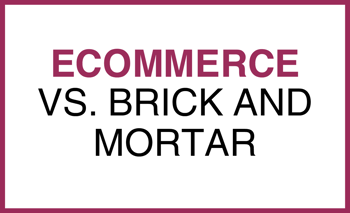
 We had a recent client who was interested in implementing an eCommerce site but was concerned about the impact it would have on their retail brand in stores. We’ve seen this before with clients, but if you’re implementing eCommerce correctly, it should help your business rather than hurt it.
We had a recent client who was interested in implementing an eCommerce site but was concerned about the impact it would have on their retail brand in stores. We’ve seen this before with clients, but if you’re implementing eCommerce correctly, it should help your business rather than hurt it.
Here are a few ways having an eCommerce site for your products can help expand your audience, introduce your products to new markets, and grow your business.
Getting started in the retail environment can be incredibly cost-prohibitive. When selling in store, you often have to lease shelf space in a store for your product. Based on that scenario, entering a new product into retail might not be a good business decision because you might not be able to achieve your ROI in a reasonable amount of time.
For example, our client was looking to put their product in a national retailer’s physical stores, but between their profit margins and the shelf rental price, it wouldn’t be a profitable situation for nearly five years. For an established company looking to take some risks that might be a valid option, but that doesn’t work for most companies.
The upfront costs of an eCommerce site are, by comparison, much more affordable. This gives you the flexibility to market and distribute your product without the high overhead of a retail placement.
Selling your product in a physical retail location alone may not get you in front of your whole audience. Potential customers in areas outside of where your products can be purchased may never know about your product if they can’t pass it in their local store. So, how can they access your product? An eCommerce site.
Your eCommerce and marketing strategy doesn’t need to focus on your entire audience, it can be segmented to target those customers who don’t have access to your retail locations. This can expand your audience without competing with your retail outlets.
Most of the time, your retail strategy works to sell directly to those who are most likely to use your product in its primary use. But what if your product has other uses that don’t lend themselves to your primary marketing?
If your product has secondary uses that apply to a completely different audience than your primary market, eCommerce can be a good way to reach that audience. Perhaps you don’t want to dilute your brick and mortar brand identity, or there’s a competitor who already dominates the retail space in this secondary market. Selling online allows you to create secondary or tertiary distribution tactics that are lower-risk than traditional retail. Using eCommerce, you can cultivate those additional markets in an efficient and cost effective way.
When it comes down to it, implementing and marketing an eCommerce site needs to be both complementary to your brand and fiscally responsible for your company. With those two qualifications met, nothing else should stand in your way.
Do you have an eCommerce marketing challenge that needs the help of an experienced team? Contact us to kickstart your marketing strategy session.
Lorem ipsum dolor sit amet, consectetur adipiscing elit

For the past two decades, we've made it our business to help you work smarter. From commerce challenges to ERP customizations, we support the power of your big ideas by helping you work more strategically, more intuitively, and more efficiently.
2658 Scranton Road, Suite 3
Cleveland, Ohio 44113
216.369.3600
No Comments Yet
Let us know what you think